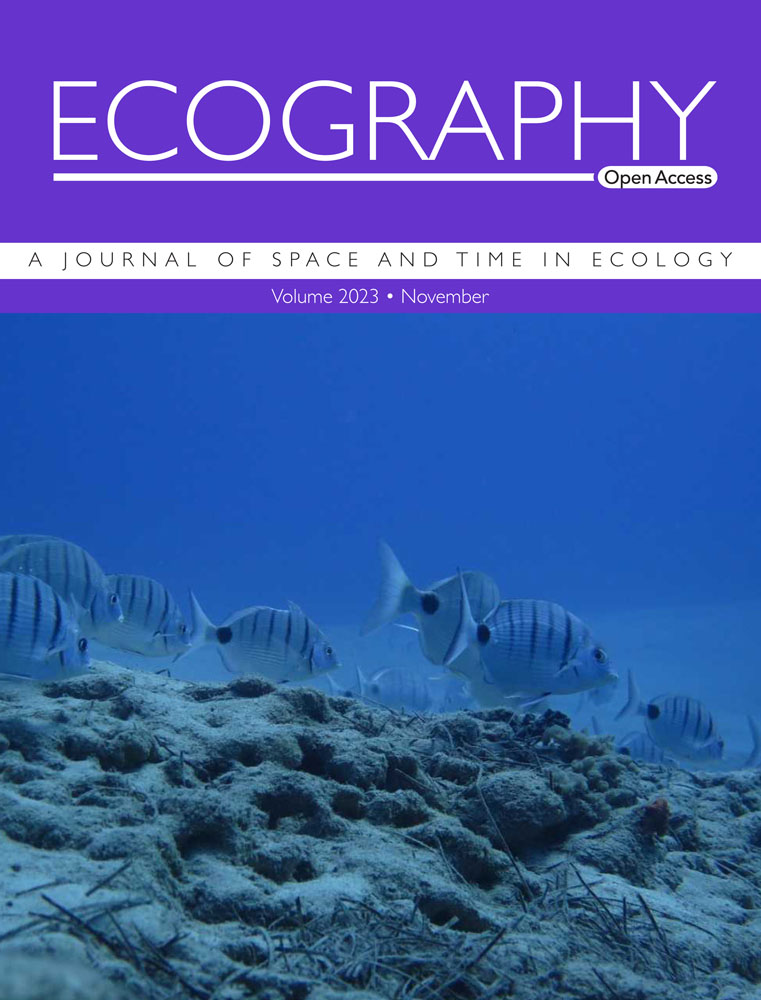Determinants of species' centrality in spatially-connected plant-frugivore networks
IF 5.4
1区 环境科学与生态学
Q1 BIODIVERSITY CONSERVATION
引用次数: 0
Abstract
Species' characteristics, such as their capacity to disperse great distances or to interact with many partners, may determine their ability to propagate impacts within and across communities. These spatial and interaction-related processes may have synergistic or opposing influences on a species' ability to connect with others, but typical analyses of ecological networks may not be able to disentangle these effects. Here, we explored how the way in which a plant–frugivore metanetwork is described influences our perception of the species that can most impact others via direct and indirect effects. Specifically, we tested whether the ranking of bird species' centrality and its relationship with species' characteristics depend on whether spatial distance and dispersal constraints are depicted in the metanetwork. To do this, we described a metanetwork comprising 29 local frugivory networks from the Atlantic Forest and Cerrado subrealm of Brazil using a gradient of spatial information, from simply aggregating interaction data across sites to using multilayer networks that connect populations from spatially-separated communities according to their spatial distance and species' dispersal capacities. We found that rankings of bird species' centrality were, on average, not strongly influenced by incorporating spatial and dispersal effects (versus aggregating interaction data across sites), though the centrality of individual species changed considerably in some cases. Three species-level characteristics, degree of frugivory (which is associated with interaction generalism), area of habitat (which is associated with the number of local networks in which a bird species occurs) and body mass predicted bird species' centrality consistently across the different approaches used to generate the metanetwork. Our findings indicate that key characteristics associated with spatial and interaction-related processes can determine the central role of species in spatially-connected interaction networks, irrespective of whether spatial and dispersal constraints are explicitly incorporated in the metanetwork.求助全文
约1分钟内获得全文
求助全文
来源期刊

Ecography
环境科学-生态学
CiteScore
11.60
自引率
3.40%
发文量
122
审稿时长
8-16 weeks
期刊介绍:
ECOGRAPHY publishes exciting, novel, and important articles that significantly advance understanding of ecological or biodiversity patterns in space or time. Papers focusing on conservation or restoration are welcomed, provided they are anchored in ecological theory and convey a general message that goes beyond a single case study. We encourage papers that seek advancing the field through the development and testing of theory or methodology, or by proposing new tools for analysis or interpretation of ecological phenomena. Manuscripts are expected to address general principles in ecology, though they may do so using a specific model system if they adequately frame the problem relative to a generalized ecological question or problem.
Purely descriptive papers are considered only if breaking new ground and/or describing patterns seldom explored. Studies focused on a single species or single location are generally discouraged unless they make a significant contribution to advancing general theory or understanding of biodiversity patterns and processes. Manuscripts merely confirming or marginally extending results of previous work are unlikely to be considered in Ecography.
Papers are judged by virtue of their originality, appeal to general interest, and their contribution to new developments in studies of spatial and temporal ecological patterns. There are no biases with regard to taxon, biome, or biogeographical area.
 求助内容:
求助内容: 应助结果提醒方式:
应助结果提醒方式:


